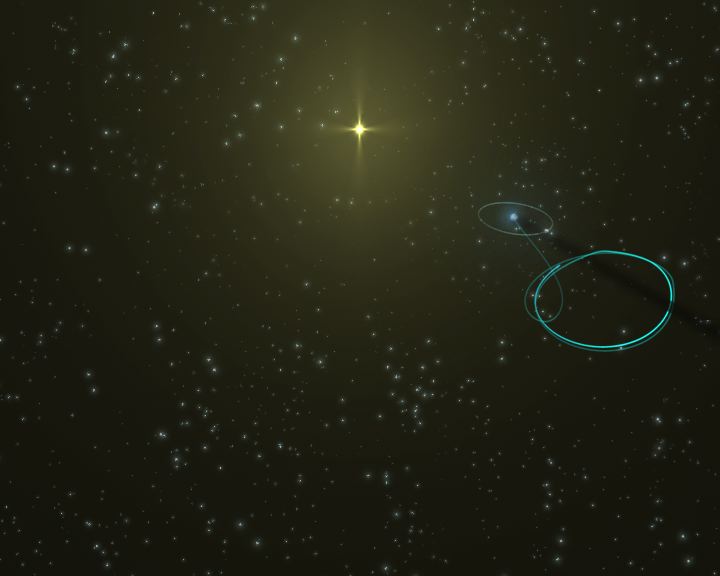Most of the radiation emitted by newly formed stars appears as infrared radiation. Newly formed stars are enshrouded by dust clouds which block out the visible light. This light however is absorbed by the dust clouds and is then re-emitted as infrared. When we point an infra-red camera at a star forming region, we see far more stars than an optical telescope would see.
The warmer infrared sources, cool stars, are studied in the same way as optical sources, but instead of using a digital camera, we need special infrared-sensitive detectors. Quite different techniques are needed for much cooler sources, or far-infrared-submillimetre radiation. Herschel uses super-cooled technology to detect radiation from very cold objects that are hidden from the optical.
But why do we need space detectors? The simple reason is that Earth’s atmosphere blocks most infrared wavelengths, as shown in the image below. In addition, the atmosphere produces its own infrared radiation as do telescopes. So, to observe in the infrared from the ground is like trying to view stars on a cloudy day. Huge tanks of liquid or solid coolant are required, cooling the telescopes to near absolute zero.

The first really successful such satellite was IRAS (InfraRed Astronomy Satellite), a collaboration between the USA, the Netherlands and the UK. IRAS was a massive success, discovering among many exciting things the ULIRG, Ultraluminous infrared galaxies, which are (mostly) violently merging galaxies with huge numbers of new stars being formed because of the merger. Other missions include the American Spitzer satellite and the Japanese AKARI. The Herschel Space Observatory is the next generation of infra-red satellite, working deeper into the far infra-red and sub-millimetre wavelengths than any other satellite.
The L2 point

Most astronomy satellites are in low-Earth orbit, which is a few hundred kilometres above the Earth’s surface. Compared to the diameter of the Earth (13000 km) this is tiny, and so the Earth fills up about half the sky. The Earth is very warm compared to the cold dust which Herschel is trying to observe, and so acts as a giant radiator. Satellites in low-Earth orbit go round about once every 90 minutes. This means that low-Earth orbit is not suitable for Herschel – it would be very hard to keep the temperature stable whilst being so close to the Earth and moving in and out of sunlight every 90 minutes. Additionally, Herschel is powered by solar panels, and does not carry rechargeable batteries like other satellites, and so keeping the power supply constant would be very difficult indeed.
Instead, Herschel is located around 1.5 million km away from the Earth, in the opposite direction to the Sun, at a location called L2. The Sun’s gravity is slightly weaker than at the Earth, which should mean that Herschel will orbit slightly more slowly than the Earth, drifting away over time. However, the combination of the gravity due to the Earth and the Sun is just right to make Herschel orbit the Sun once a year. This keeps it in the same place relative to the Earth. In order to keep fuel consumption down, Herschel actually orbits the L2 point at a distance of about 600,000 km, as shown in the image on the right. An additional advantage is that from Herschel’s observation point the Earth, the Sun and the Moon are all nearly in the same direction – this means that there’s only one direction to avoid when scanning the skies.
.
